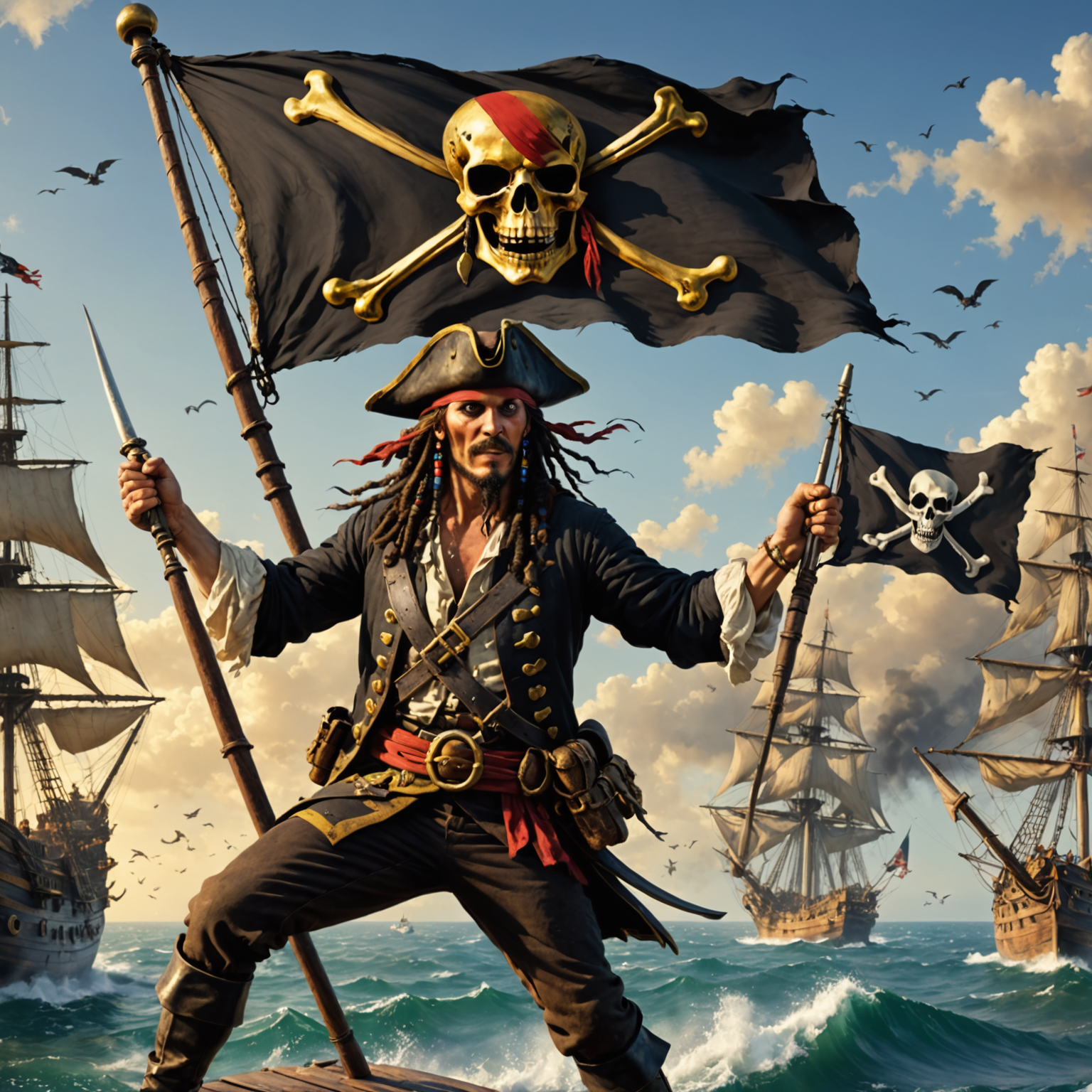The truth about pirates (they didn’t actually say “Arrr!”)
 Pirates during the Golden Age sailed fast ships and flew the notorious Jolly Roger flag, but their speech and behavior were very different from what movies show.
Pirates during the Golden Age sailed fast ships and flew the notorious Jolly Roger flag, but their speech and behavior were very different from what movies show.
The Truth About Pirates: They Didn’t Actually Say “Arrr!”
By Peter Teoh, Science Writer
Introduction
When you think of pirates, what comes to mind? Maybe a gruff voice shouting “Arrr!” or “Matey!” and a fearsome crew with eye patches, wooden legs, and treasure maps. But how much of this is true, and how much is just Hollywood? Let’s dive into the real stories behind pirates and discover what life was really like on the high seas.
Who Were the Pirates?
Pirates are people who attacked and robbed ships at sea. While piracy has existed since ancient times — including in Ancient Greece and Rome — the most famous pirates lived during the “Golden Age of Piracy” from about 1650 to 1720[1][2][6]. This was when pirate crews operated all over the world, especially in the Caribbean, the Atlantic Ocean, and the Indian Ocean.
These pirates were often sailors who lost their jobs or chose a lifestyle of freedom, adventure, and sometimes greed. They attacked merchant ships to steal valuable cargo like gold, spices, and goods. Pirates were known for their brutality, but they also had strict rules about behavior on their own ships to maintain order[4].
The Myths vs. Reality
Did pirates really say “Arrr!”?
Nope! The popular pirate accent and phrases like “Arrr!” or “Matey!” come mostly from movies and plays. This style was inspired by an actor named Robert Newton, who played the pirate Long John Silver in the 1950 film Treasure Island. Newton’s exaggerated West Country English accent — from the southwest of England — became the classic “pirate voice” we know today. Historical evidence shows pirates didn’t speak like this at all[4].
What about walking the plank?
This dramatic image of forcing prisoners to walk off a plank into the sea is mostly a Hollywood invention. There is no solid historical proof pirates used this method to punish or kill captives. Pirates more often held prisoners for ransom or simply released them[4].
Eye patches, peg legs, and wooden hooks?
Pirates often faced dangerous conditions and battles at sea, so injuries were common. Eye patches and wooden legs are real, but they were practical solutions rather than pirate fashion statements. The eye patch might have helped pirates keep one eye adjusted to darkness below deck, but it’s unclear if this was widespread[4].
Life as a Pirate
Pirates sailed small, fast ships that could outrun larger navy vessels or merchant ships. After attacking with cannon fire, pirates boarded enemy ships for hand-to-hand combat using swords and pistols[2]. They stole cargo and often the ships themselves, which they either sold or converted for their own use.
Most pirates were men, as women were generally considered bad luck on ships. Some women did become pirates, often disguising themselves as men[2]. Surprisingly, pirates had their own codes of conduct. For example, stealing from fellow pirates was severely punished, even though pirates were thieves themselves[4].
The Golden Age of Piracy
This era was filled with famous pirates like Blackbeard, Henry Morgan, and Captain Kidd. These pirates disrupted trade routes that were vital to the economies of powerful countries like Britain and Spain[1][2]. Pirate flags like the black Jolly Roger with skull and crossbones were designed to strike fear into their victims[4].
Despite their fearsome reputation, pirate crews often had democratic elements, such as voting for their captains and sharing treasure more equally than navies or merchant ships[6]. However, life was still dangerous and short for most pirates.
Closing Thoughts
Pirates have captured our imagination for centuries, but much of what we think we know comes from stories, movies, and myths rather than fact. They didn’t say “Arrr!” as a normal way of speaking, didn’t usually make people walk the plank, and their lives were a mix of danger, adventure, and strict rules. Understanding the real history behind pirates helps us appreciate the fascinating and complex world of the high seas.
Side Notes
- Pirates sometimes pierced their ears, believing it improved eyesight[4].
- The youngest known pirate from the Golden Age was a boy around 9 years old who joined Blackbeard’s crew[3].
- Pirate treasure maps are mostly a myth; pirates usually spent their loot quickly or hid it well if at all[4].
Trending Sidebar
- Modern Piracy: Piracy still exists today, especially near Somalia and the Strait of Malacca, but these are very different from the pirates of the past[4].
- Pirate Culture in Pop Media: Movies like Pirates of the Caribbean are inspired by real pirate gangs but mix fact with fiction for entertainment[4][6].
- Pirates and Democracy: Pirate ships were sometimes surprisingly democratic, with captains elected by the crew and codes of conduct[6].
Leave a comment